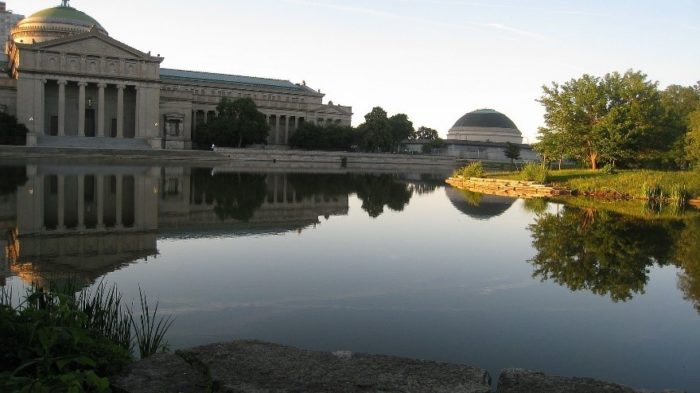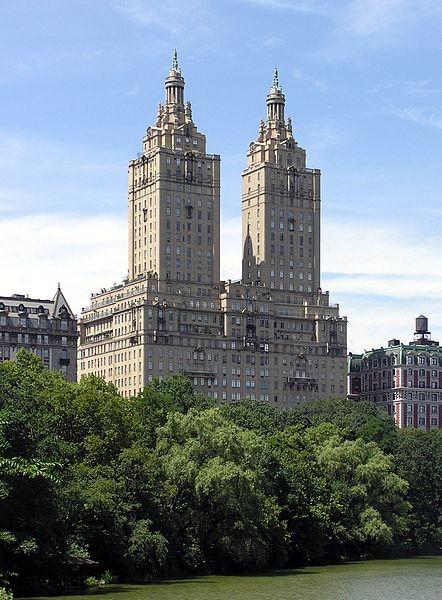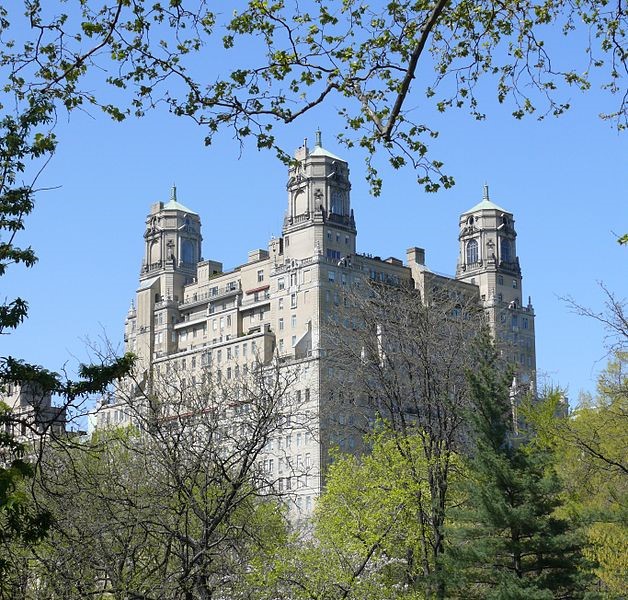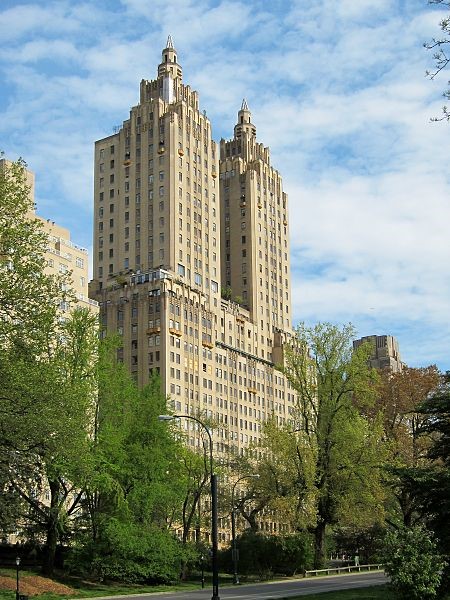The three towered masterpieces of Emery Roth — The Beresford, The San Remo and The Eldorado — make Central Park West one of the most iconic streetscapes in the city. Here we explore each building and get to know their impressive creator.
The story of Emery Roth is one of indomitable optimism and tenacity. Born in Hungary in 1871, Emery Roth emigrated to America, alone, at the tender age of 13, after his father’s death. He was fiercely dedicated to becoming an architect early on, and by 18 years of age, he’d won a national contest, the Maize Competition, by drafting a living room decorated with corn plant motifs. Shortly thereafter, he gained employment at the firm Burnham & Root in Chicago and assisted with the drawings for the celebrated Palace of Fine Arts at the World’s Columbian Exposition, also known as the Chicago World’s Fair. He also completed his first solo project, an exhibitor’s pavilion, for the event.
The Palace of Fine Arts, now the Museum of Science and Industry, in Chicago (Image: Urbanrules/Wikimedia)
At the Exposition, he met preeminent American architect Richard Morris Hunt who delivered a casual job offer should Roth find himself in New York City, which, true to form, inspired Roth to set off for Manhattan soon after. While with Hunt, Roth worked on interiors for Cornelius Vanderbilt’s renowned Newport mansion, The Breakers, and by 1898, after working under architect and designer Ogden Codman for three years, Roth struck out on his own.
His first major commission was the sumptuous Hotel Belleclaire, which still stands at the corner of Broadway and West 77th Street. He spent the next several years designing apartment houses, academic buildings and churches throughout the city, when his seemingly charmed life took a turn for the worse in 1918. That year, he lost his vision in one eye due to glaucoma and nearly perished in the notorious influenza epidemic.
After the slowdown in construction caused by World War I, the early 1920s were a boom time for builders. Roth went on to design his most famous works during this era including the Ritz Tower on Park Avenue, The Oliver Cromwell building on West 72nd Street, as well as our three Central Park West subjects.
Noted for refining and perfecting residential apartment layouts, Roth’s last notable work was the Normandy Apartments on Riverside Drive in 1939. By this time, Roth’s sons had joined him in the profession, and though Emery Roth died in 1948, Emery Roth & Sons continued to function as a family business until its demise in 1996. His great grandson Richard Lee Roth still works in architecture in the Miami area.
The San Remo (1930)
145-146 Central Park West between West 74th and 75th streets
The San Remo (Image: Bilby/Wikimedia)
The southernmost of Roth’s towered Central Park West buildings, the San Remo is one of the last great New York buildings erected in the pre-Depression era. Described as “The Aristocrat of Central Park West” in an advertisement, the building was noted among writers of the day for its expansive rooms and terraces and “the remarkable sun and light everywhere.” Roth, a devoted classicist, fully embraced Late Italian Renaissance influences in The San Remo’s design. The block-long main portion of the light brick and limestone building ascends 17 stories, with terraced setbacks beginning at the 14th floor, while two bold 10-story towers culminate in distinctive circular temples. The exterior details, wrought in limestone, terra cotta and metal, are ornate and include balustrades, pilasters, columns, garlands, urns, cartouches and scrollwork. As the Landmarks Preservation Commission’s report notes, “A residential skyscraper in classical garb, the San Remo epitomizes Roth’s ability to combine the traditional with the modern, an urbane amalgam of luxury and convenience, decorum and drama.”
Despite the warm reception, the building suffered during the Great Depression, and a year after its debut, a third of its apartments were still vacant. Rents were reduced, units subdivided, but the building was sold, along with the Beresford, just 10 years later for a relative pittance. Today the building is known for its celebrity tenants and glorious homes. The south tower penthouse, occupying the 26th and 27th floors, is currently listed for sale at $59 million.
The Beresford (1929)
211 Central Park West between West 81st and 82nd streets
The Beresford (Image: Ad Meskens./Wikimedia)
Ideally situated across from the American Museum of Natural History and Central Park, the grand design of The Beresford is emblematic of the heady 1920s, prior to the Great Depression. In fact, the building was completed just weeks before the stock market crash of Oct. 29, 1929. Inside, apartments featured lavish servants’ halls, and many were as large as freestanding townhomes of the day. Due to the stock market crash and subsequent Great Depression, the Beresford was sold, along with the similarly stricken San Remo, for just $25,000 over the existing mortgages, while experts have pegged the buildings’ pre-Depression value at roughly $10 million.
The blocky proportions of the building have earned it comparisons to a mediaeval fortress while the three ornate water towers soften the overall appearance. Described as Late Renaissance and vaguely Baroque in influence, the building solidifies Roth’s penchant for classic and eclectic designs. Wrought in buff brick and limestone, the building includes an extensive sculptural program of angels, cherubs, rams and skulls. Like the San Remo, setbacks begin at the 14th floor creating terraces for residences on upper floors. But it’s the three octagonal watertank towers, originally open and conceived as observation decks, that give the building its iconic shape. Former occupants of the towered residences include the late Cosmopolitan chief Helen Gurley Brown and tennis great John McEnroe. A three-bedroom, three-bath home on the 20th floor is currently listed for $8.95 million.
The Eldorado
300 Central Park West between West 90th and 91st streets
The Eldorado (Image: Velvet/Wikimedia)
The northernmost of the Emery Roth Central Park West towered apartment houses, The Eldorado was designed by the firm of Margon & Holder with Roth as consultant. Fans of Roth’s will note that, while the building includes his signature towers, the overall Art Deco execution is a departure. It is believed that Roth developed the massing of the building and the apartment layouts, which resemble that of The San Remo, while Margon & Holder planned the façade.
The 1929 Multiple Dwelling Law had legalized setbacks of towers for the first time, and this allowance is responsible for the distinctive silhouettes of all three Roth’s towered masterpieces. Here, the twin spires are described as ” futuristic rocket-like pinnacles.” Each sits atop 12-story towers that rise from a 16-story base. Built in stone, brick and terra cotta, the building features stunning Deco bronze doors, grills and handrails throughout its lower floors.
TV buffs will remember that Nucky and Margaret Thompson share a last dance and contemplate their future in an empty apartment at the “brand-new Eldorado,” in the “Boardwalk Empire” finale of the same name. A north tower duplex spanning the 29th and 30th floors is reportedly in contract after being listed at $24.95 million.






